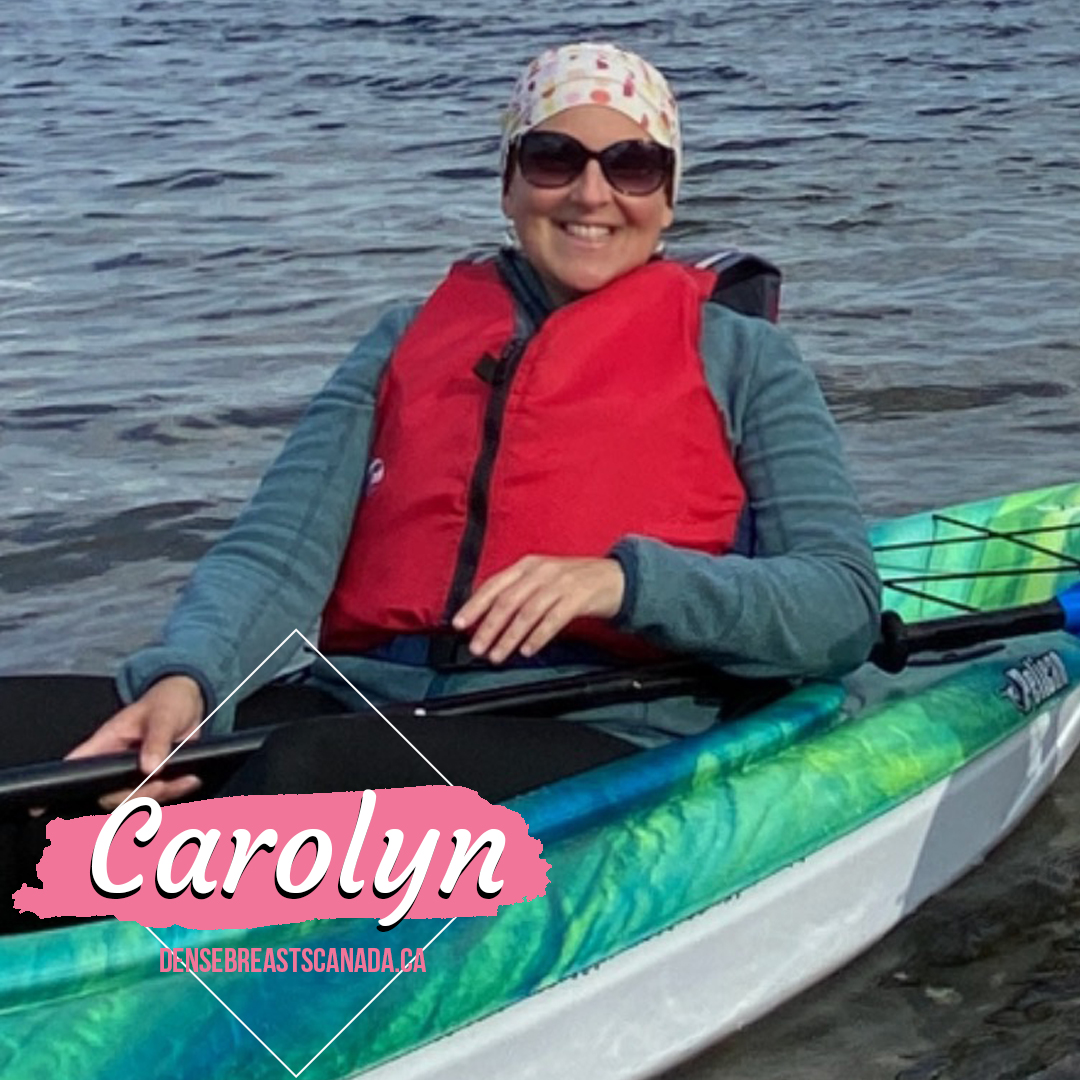Carolyn

I called my family doctor to make an appointment and, later that month, I saw her virtually. She told me they were likely nothing and that I was too young for it to be cancer, but at least she also wrote me a requisition for a mammogram and ultrasound.
It was a real struggle to get an appointment owing to pandemic delays but my doctor refused to refer me to a breast screening program location and instead insisted I schedule at a clinic. Finally, after weeks of leaving messages, sending emails, and trying to book online, I was able to get an appointment for October 22nd?this was at the beginning of August.
The next day after my appointment, I got a message to call the clinic?it was urgent. They told me they had been trying to reach my doctor all day but hadn?t heard back. They wanted my permission to send my images to a hospital. I figured it wasn?t good news.
About a month later, after numerous appointments for further imaging, biopsies, and genetic testing, I received an official diagnosis?the lump in my left breast was ER/PR+ HER2- invasive ductal carcinoma and it had already spread to my lymph nodes. I didn?t carry any genetic mutations though. Initially, I was pretty calm about it, maybe because I had already come to the realization from reading my reports online, but I think I had a bit of a nervous breakdown the weekend after I got the diagnosis.
At this point, the pathology for the lump in my right breast hadn?t come back yet so the plan was to wait to get that before forming a treatment plan. Incredibly, the lump in my right breast turned out to be a different cancer?mucinous carcinoma but at least ER/PR + HER2- too.
I had my first of eight sessions of chemo December 20th and got my last period ever on Christmas Day. The first four sessions went okay but I had a serious allergic reaction to the Paclitaxel I was given for my fifth and had to be switched to Taxotere. The side effects were awful and I was out of commission from day 3 to day 7 every time.
At the end of August, I started the first of 15 radiation therapy sessions. After everything I had been through up to that point, this step felt relatively ?easy? so I was relieved. Of course the relief only lasted so long until I started thinking about all the what-ifs following treatment. I was really shocked and disappointed to learn that since I had a bilateral mastectomy, I wouldn?t receive any routine surveillance imaging. Since my cancer had been advanced, I worry about a recurrence and would want to know sooner than later, not like with my original diagnosis.
Which of course leads me to my disbelief of how the chance to detect my cancer early was effectively denied to me by outdated guidelines based on flawed methodology and upheld by a seemingly unqualified, out-of-touch, misogynistic task force. I couldn?t believe the stats about how many women are diagnosed in their forties and that even with that information, supposedly medically competent people would advise against screening. By that age, women have been having pap tests for two decades or more and no one felt we are too fragile to hear those results or go for further testing if necessary. I was further floored to learn that by the time you find a lump, your cancer is already advanced.
